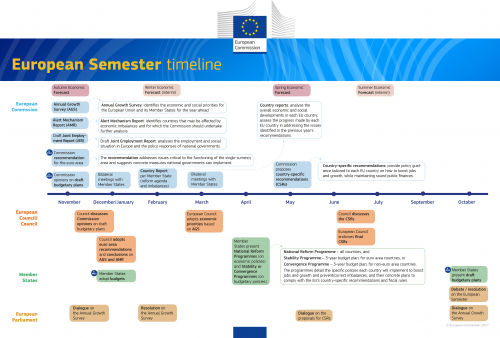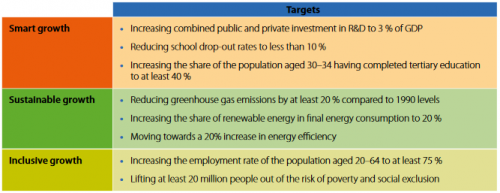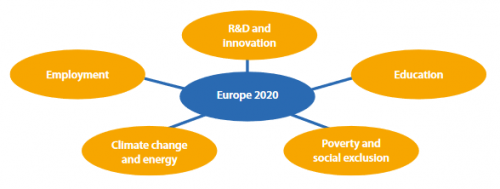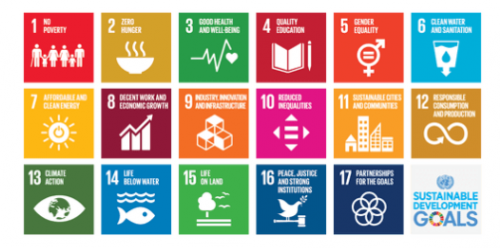Archive:Europe 2020 indicators - background
Planned article update: September 2020.
This article is part of a set of statistical articles on the Europe 2020 strategy. It introduces the Europe 2020 strategy and the broader political context in which it is embedded. The articles cover the five thematic areas of Europe 2020 on employment, education, poverty and social exclusion, climate change and energy and R&D and innovation. An executive summary article outlines the main trends revealed by the Europe 2020 indicators. Additional ‘country profiles’ describe the progress of each Member State towards its national Europe 2020 targets.
Full article
Providing statistical support to Europe 2020
The 2019 edition of Eurostat’s annual ‘flagship publication’ entitled ‘Smarter, greener, more inclusive? — Indicators to support the Europe 2020 strategy’ provides statistical support for the Europe 2020 strategy, the EU’s agenda for jobs and growth for the current decade, and monitors progress towards its headline targets. The publication presents the most recent official statistics disseminated by Eurostat, with the aim of providing statistical analyses related to important European Commission policy frameworks and relevant economic, social and environmental phenomena. Impartial and objective statistical information is essential for evidence-based political decision-making and defines Eurostat’s role in the context of the Europe 2020 strategy. It involves developing and choosing relevant indicators to support the strategy, producing statistical data and assuring the indicators’ quality.
The analysis in the five thematic articles is based on the Europe 2020 headline indicators, developed to monitor the strategy’s targets. The breakdowns of the headline indicators are used to deepen the analysis and present a broader picture. The data come from the European Statistical System, mainly from official European social surveys such as the EU Labour Force Survey (EU LFS) or the EU Statistics on Income and Living Conditions (EU SILC). Data on EU-28 aggregates and individual Member States are presented and, where available, comparisons are made with the members of the European Free Trade Association (EFTA) and EU candidate countries, as well as non-European countries such as the United States and Japan. For some of the headline indicators, maps presenting the performance of Europe’s regions and their progress towards the national Europe 2020 targets are included, even though the targets only apply on a national level.
The thematic articles analyse past trends, with the baseline year varying across targets, up to the most recent year for which data are available (2017 or 2018). They aim to document and analyse the trends shown by the headline indicators and the distance to the Europe 2020 targets. Most recent data on the headline indicators and information on the Europe 2020 strategy are available on a dedicated section of Eurostat’s website: Europe 2020 headline indicators.
The Europe 2020 strategy
The Europe 2020 strategy was adopted by the European Council on 17 June 2010 as the successor to the Lisbon strategy. It emphasised smart, sustainable and inclusive growth as a way to strengthen the EU economy and prepare its structure for the challenges of the next decade.
Three key priorities and eight targets
The Europe 2020 strategy puts forward three mutually reinforcing priorities to make Europe a smarter, more sustainable and more inclusive place to live:
- Smart growth, through the development of an economy based on knowledge, research and innovation.
- Sustainable growth, through the promotion of resource-efficient, green and competitive markets.
- Inclusive growth, through policies aimed at fostering job creation and poverty reduction
Under these three key priorities, the EU adopted eight targets (see Table 1).
For a detailed overview of the indicators, see Table 1 in the Executive summary.
The eight targets belong to five thematic areas: employment, education, poverty and social exclusion, climate change and energy, and R&D and innovation (see Figure 1). These five areas are strongly interlinked. For example, higher educational levels are associated with improved employability while increasing the employment rate helps to reduce poverty. A greater capacity for R&D and innovation across all sectors of the economy, combined with increased resource efficiency, would improve competitiveness and foster job creation. Investing in cleaner, low-carbon technologies would help the environment, contribute to the fight against climate change and create new business and employment opportunities [1].
The EU targets have been translated into national targets. These reflect each Member State’s situation and the level of ambition they are able to reach as part of the EU-wide effort to implement the Europe 2020 strategy. However, in some cases the national targets are not sufficiently ambitious to cumulatively reach the EU-level targets. For instance, fulfilling all national targets in the area of employment would bring the overall EU-28 employment rate up to 74 %, which would still be one percentage point below the Europe 2020 target of 75 % [2].
The European Semester: annual cycle of policy coordination
The success of the Europe 2020 strategy crucially depends on Member States coordinating their efforts. To ensure this, the European Commission has set up an annual cycle of economic policy coordination known as the European Semester. Its main purpose is to foster structural reforms, to create more jobs and growth in line with the Europe 2020 strategy, to boost investment, to ensure sound public finances (avoiding excessive government debt) and compliance with the Stability and Growth Pact (SGP), and to prevent excessive macroeconomic imbalances in the EU.
Figure 2 presents the stages of the European Semester policy cycle. These include:
- Adoption of the Annual Growth Survey (AGS) by the European Commission, which sets out overall economic and social priorities for the EU and its Member States.
- Publication of the Commission’s Alert Mechanism Report (AMR), the draft Joint Employment Report and Recommendations for the Euro Area, accompanied by a Staff Working Document.
- Publication of a country report by the Commission for each Member State, analysing its economic and social situation and progress on implementing the country-specific recommendations and towards the Europe 2020 strategy. For the Member States selected in the Alert Mechanism Report, it also includes the ‘in-depth review’ of possible imbalances.
- Submission of the National Reform Programmes (NRPs) and Stability and Convergence Programmes (SCPs) by each Member State, presenting concrete reforms and measures towards implementing the country-specific recommendations and the Europe 2020 strategy.
- Adoption of the proposals for country-specific recommendations for each Member State (except those under a stability support programme) by the Commission, followed by formal Council endorsement of the country-specific recommendations. The recommendations focus on the issues that require the most urgent attention in the next 12 to 18 months due to their macro- and socio-economic significance. The recommendations are also consistent with the Europe 2020 strategy.

Source: European Commission, Visual presentation of the European Semester economic coordination cycle
Europe 2020 in a broader policy perspective
White Paper on the future of Europe and follow-up Reflection Papers
At the Rome Summit on 1 March 2017 the Commission presented a White Paper setting out a broader vision for the EU’s future. The paper outlines the main demographic, economic and political challenges the EU will face in the future and presents five scenarios for the potential state of the Union in 2025:
Scenario 1: Carrying On — The EU focuses on delivering its positive reform agenda.
Scenario 2: Nothing but the Single Market — The EU is gradually re-centred on the single market.
Scenario 3: Those Who Want More, Do More — The EU allows willing Member States to do more together in specific areas.
Scenario 4: Doing Less, More Efficiently — The EU focuses on delivering more and faster in selected policy areas, while doing less elsewhere.
Scenario 5: Doing Much More Together — Member States decide to do much more together across all policy areas.
The White Paper has been supplemented by six reflection papers on specific issues important for the future of the EU: the social dimension of Europe, harnessing globalisation, the deepening of the economic and monetary union, the future of European defence, the future of EU finances and the key enablers for the transition towards a sustainable Europe by 2030.
The 2030 Agenda for sustainable development
In a global context, the Europe 2020 strategy plays an important role in addressing the internationally adopted 2030 Agenda for Sustainable Development and thus putting the EU on the right track to achieving a sustainable future.
The 2030 Agenda was formally adopted by world leaders at the United Nations Sustainable Development Summit in September 2015. The document, titled ‘Transforming our world: the 2030 agenda for sustainable development’, consists of a declaration, a set of 17 Sustainable Development Goals (SDGs) and 169 related targets, a section on the means of implementation and on the follow-up and review of the 2030 Agenda.
In response to the 2030 Agenda the European Commission released the Communication ‘Next steps for a sustainable European future: European action for sustainability’ in November 2016. Since 2017, Eurostat publishes annual EU SDG monitoring reports ‘Sustainable development in the European Union — Monitoring report on progress towards the SDGs in an EU context’, which is based on the EU SDG indicator set and includes more background information. On 30 January 2019 the Commission presented a reflection paper ‘Towards a Sustainable Europe by 2030’, where the Commission identifies competitive advantages that give the EU an opportunity to show leadership and highlight the path for others to follow.
Direct access to
- Towards robust quality management for European Statistics - Communication from the Commission to the European Parliament and the Council COM(2011) 211 final.
- Regulation (EC) No 223/2009 of 11 March 2009 on European statistics
Notes
- ↑ European Commission (2010), Europe 2020 — A strategy for smart, sustainable and inclusive growth, COM(2010) 2020 final, Brussels, p. 11.
- ↑ European Commission (2014), Taking stock of the Europe 2020 strategy for smart, sustainable and inclusive growth, COM(2014) 130 final, Brussels, pp. 12–16.



